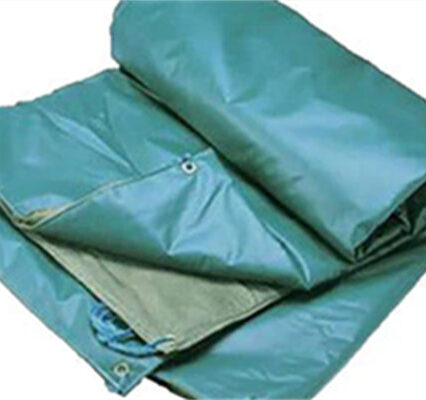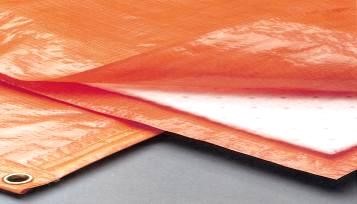
In the realm of outdoor gear and construction materials, the term lona com isolamento goes far beyond the ordinary blue or silver tarps we associate with temporary shelters or cargo covers. Today, insulated construction tarps represent a significant leap forward in functionality and versatility. They cater to a wide range of needs—from extreme weather protection in camping to energy-efficient practices in construction sites. Let’s explore what insulated tarps are, their unique features, and why they should be your go-to choice for outdoor projects.

I. Definição e fundamentos
Insulating tarps are high-performance, multi-layered tarpaulin sheets designed to provide enhanced insulation. Unlike traditional tarps made solely from polyethylene or PVC, an insulated tarpaulin incorporates additional layers of insulating material such as foam, bubble wrap, or reflective film. This innovative construction not only improves durability but also enhances their ability to retain heat, block cold, and regulate temperature fluctuations—making them excellent insulation tarps for both outdoor and industrial use.
II. Principais caraterísticas e benefícios
1. Regulação da temperatura:
An insulated construction tarp is ideal for winter construction sites, cold-weather camping, or as an insulated tarp for tent setups. It helps regulate temperature and retain warmth effectively.
2. Resistência à humidade:
Many insulated tarps are waterproof, ensuring your workspace or camping gear stays dry even in harsh conditions.
3. Durabilidade:
Heavy-duty materials and reinforced seams make insulated tarpaulins capable of withstanding wind, snow, or strong UV rays.
4. Leve e portátil:
Despite their advanced build, insulated tarps for camping remain lightweight and easy to carry, perfect for hikers, campers, or contractors.
5. Versatilidade:
Whether used as an insulating tarp for livestock barns, a temporary roof cover, or even as soundproofing in construction, their applications are diverse.
III. Aplicações em todos os sectores
1. Recreação ao ar livre:
Campers and hikers use insulated tarps for camping to create warm, dry shelters, protect equipment, or build makeshift kitchens in cold weather.
2. Construção e renovação:
Builders rely on insulated construction tarps to shield unfinished structures, protect against frost, and provide temporary insulation during roofing or siding projects.
3. Agricultura:
Farmers use insulated tarpaulins to regulate greenhouse temperatures, protect livestock barns, and prevent frost damage to crops.
4. Resposta de emergência:
Relief teams deploy insulated tarps as shelters, storage units, or medical stations in disaster areas.
5. Gestão de eventos:
Event planners turn to insulation tarps for controlled environments at outdoor concerts, festivals, and exhibitions.
IV. Escolher a lona isolante correta
When buying an insulated tarp, consider:
1. Composição do material:
Procure lonas com materiais de isolamento de alta qualidade que se adaptem às suas necessidades específicas (por exemplo, núcleo de espuma para isolamento máximo, película reflectora para retenção de calor).
2. Tamanho e forma:
From small insulated tarps for camping to large insulated construction tarps, match the tarp to your project.
3. Durabilidade e peso:
Equilibre a necessidade de durabilidade com a portabilidade. As lonas mais pesadas podem oferecer um melhor isolamento, mas podem ser mais difíceis de transportar.
4. Resistência às intempéries:
Escolha uma lona que possa suportar as condições climatéricas previstas, incluindo impermeabilidade, resistência aos raios UV e resistência ao vento.
5. Facilidade de configuração e armazenamento:
Procure lonas com ilhós reforçados ou com atilhos para facilitar a montagem e opções de armazenamento compactas para transporte.
V. Manutenção e armazenamento de lonas isolantes
A manutenção e o armazenamento adequados podem prolongar a vida útil da sua lona isolante. Eis alguns conselhos:
1. Limpar regularmente:
Mild soap and water are enough to clean your insulating tarp.
2. Inspecionar quanto a danos:
Verificar regularmente se existem rasgões, furos ou desgaste e reparar, se necessário, para evitar mais danos.
3. Armazenar corretamente:
Store your insulated tarps in a cool, dry place, away from direct sunlight and extreme temperatures. Folding or rolling them up tightly can help prevent creases and wrinkles.
4. Evitar objectos pesados:
Evite empilhar objectos pesados em cima da lona, pois isso pode comprimir as camadas de isolamento e reduzir a sua eficácia.
Conclusão
From insulated construction tarps on job sites to insulated tarps for camping adventures, these multi-layered covers deliver unmatched durability, weather protection, and temperature control. Whether you need an insulated tarp for tent use, agricultural storage, or industrial applications, choosing the right insulated tarpaulin ensures reliability and efficiency.
Next time you face harsh outdoor conditions, consider the benefits of a high-quality insulated tarp—your ultimate solution for warmth, durability, and versatility.
